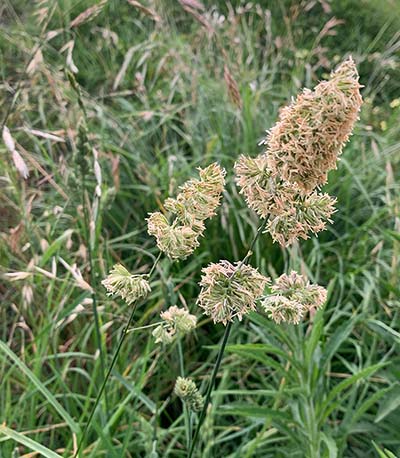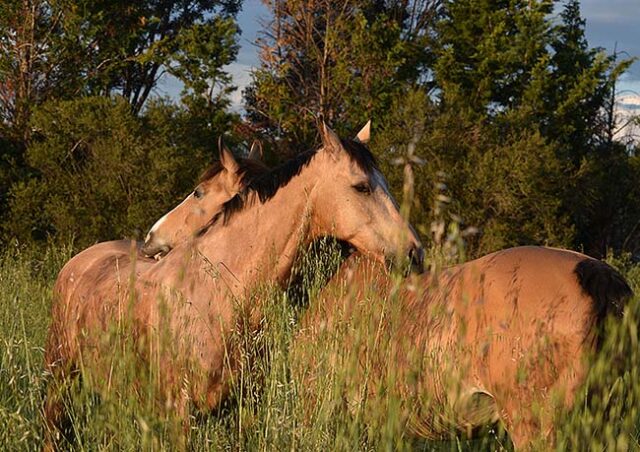By Dr. Mariette van den Berg, B.AppSc. (Hons), MSc, PhD (Equine Nutrition)
Photography: Mariette van den Berg and Tellisa Kearton
We all recognise that pasture is the best environment for horses. The opportunity to graze for extended periods has two very important benefits for the horse. First, forage (or fiber of some type) is a basic necessity for normal functioning of the digestive system, and a well-managed pasture will be an economical source of high-quality feed which means you spend less money on roughages.
Please note to view the tables associated with this article you will need to view the online edition of the magazine
Well-managed pasture can meet most of your horse’s nutritional needs including brood and lactating mares, growing foals, and sport horses, with minimal supple-mentation requirements. Second, pasture is a great place for horses to exercise, and this exercise also can be important in maintaining healthy digestive function.
While pasture is a good source of nutrients, pasture can also be the cause of many headaches for horse owners. It can be a heaven for parasite issues if it is not managed properly and/or when over-worming practices are adopted (resistance issues). During pasture growth periods, horses may become more prone to colic episodes. In addition, during the growing period pastures can accumulate higher quantities of non-structural carbohydrates (NSC) which may put horses at risk of becoming overweight or developing laminitis. NSCs typically include starch, simple sugars, and the rapidly fermentable carbohydrates such as fructans. Metabolic issues especially occur if horses are additionally fed cereal-based concentrates. Pastures may also contain plants that accumulate higher amounts of specific secondary compounds or fungi, that can lead to toxicity issues if ingested in large or smaller quantities depending on the toxin.
Today, most horses have access to some kind of pasture with a variety of plants typically consisting of grasses, legumes, and/or herbaceous plants (often weeds). However, because of limited turnout due to demanding work schedules, lack of space, and the focus on cereal-based concentrates as a major source of nutrition for horses, the importance of pasture is often overlooked. Routinely pasture is used as a turn-out area and is often not properly managed with the intention of utilising it as a part of your horse’s nutritional program. In addition, horse owners may also experience various land problems including erosion (no grass cover), compaction, water-logging, and weeds which may affect the useability of these areas/pastures for horses. Often this is also influenced by climatic conditions and extreme weather events.
If you have pasture, even on the smallest of acreage, you and your horse can benefit from it. Therefore, in this fourth and final part of the series we focus on some tips as to how to get the most out of your pasture, keeping them healthy, and what additional strategies you can adopt if you cannot keep horses on pasture year-round.
Getting to know your pasture plants

To best manage horses on pastoral systems it’s important to get to know the plants your horses may consume. There are of course thousands of grass, legume, and herbaceous species out there, so it would be impossible to provide you with a complete list that provides all the ins and outs of all the plant species in your pasture. This is also very specific to the country and climate in which you live, so in this article we will mainly focus on grasses and legumes and discuss the broad differences between them and what common species we may encounter in temperate and (sub) tropical environments around the world.
Grasses
The grass family, known scientifically as the poaceae or gramineae (both names are correct), is one of the four largest families of flowering plants, with approximately 600 to 700 genera and 10,000 species. The grasses are included with lilies, orchids, pineapples, and palms in the group known as the monocotyledons, which includes all flowering plants with a single-seed leaf. Grasslands are estimated to compose 20% of the vegetation cover of the earth and span various habitats including wetlands, forests, and tundra.
Grasses can be large, like bamboo or corn, or small like annual bluegrass. Grass plants develop fruit called grain which feed much of the world and yet have green leaves and stems not digestible for humans that are the main food source for grazing animals. There are many species of grasses that are specifically used or can be found in pastures for horses, depending on your geographical location some may be native others may have been introduced (see Table 1)... To read the complete article you need to be a subscriber
CLICK HERE TO SUBSCRIBE TO BREEDING NEWS
SUBSCRIBERS CAN READ THE COMPLETE ARTICLE BY LOGGING IN AND RETURNING TO THIS PAGE





